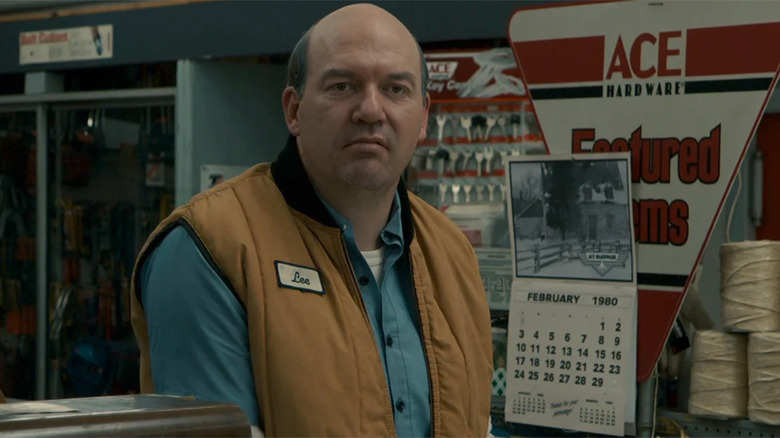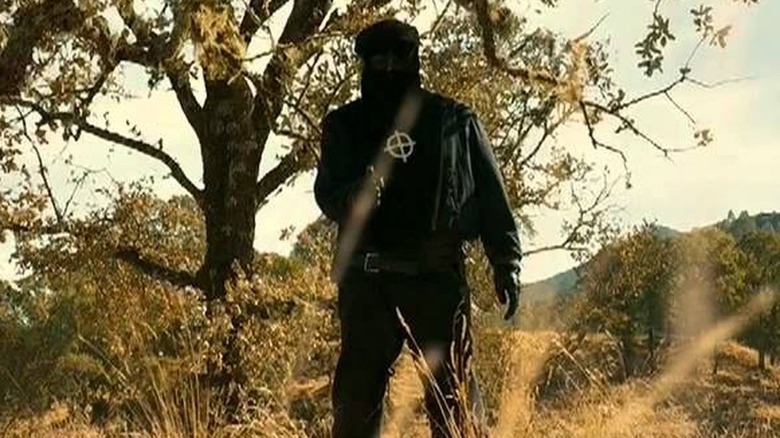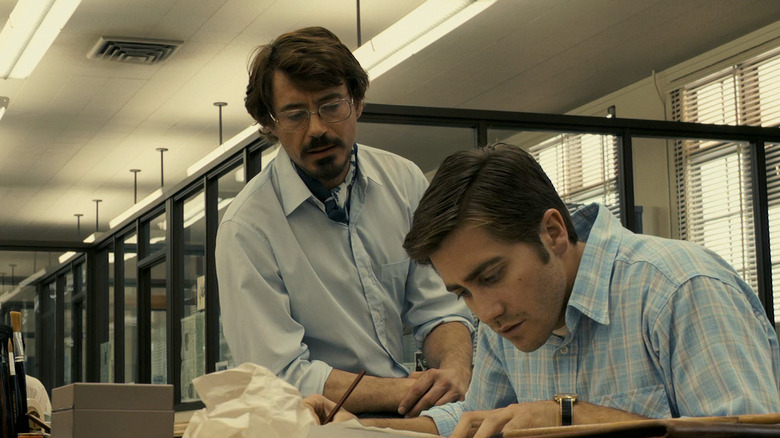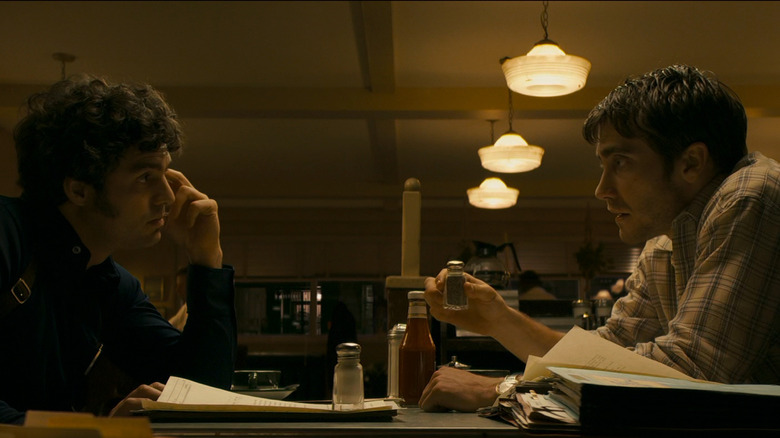Zodiac Ending Explained: Unlocking The Mystery Of David Fincher's Film
"Zodiac" is one of the best movies of the last 20 years, and I mean that in all sincerity – no hyperbole here. David Fincher's blend of journalistic investigation and serial killer thriller is a sprawling, multi-part saga that by its very design cannot have a true conclusive ending. Why? Because the Zodiac Killer was never caught. But "Zodiac" thinks it has a pretty good idea of who the killer was, and it's not afraid to putt that theory forth and let the audience make up their own mind. So let's delve into the film, the true story that inspired it, and the "Zodiac" ending that ties it all together.
This Is the Zodiac Speaking
On August 1, 1969, three California publications – the "Vallejo Times Herald," the "San Francisco Chronicle," and the "San Francisco Examiner" – each received a cryptic letter from an anonymous sender. The letter writer took credit for a series of murders at two locations, Lake Herman Road and Blue Rock Springs. Both incidents involved a male and female couple ambushed and shot in their cars. The Lake Herman Road incident resulted in the deaths of the male and female victims. The Blue Rock Springs shooting killed the female individual, but the male survived even though he was shot multiple times. The letters from the alleged killer contained a 408-symbol cryptogram that various officials attempted to decipher. Eventually, a pair of amateurs, a married couple from Salinas, California, cracked the code. The result was a rambling note about how the author liked "killing people because it is so much fun."
On August 7, the alleged killer sent another letter to the "San Francisco Examiner," and this time he gave himself a name, starting the letter off with "Dear Editor This is the Zodiac speaking." And thus, a new infamous serial killer was born. Through his rambling letters, the killer would eventually claim responsibility for 37 murders. However, investigators never bought that number. Instead, the most commonly agreed and confirmed number is seven victims total, with two of those victims ultimately surviving. Not that the smaller number makes the loss of life any less disturbing or unfortunate.
Police spent tons of effort and hours trying to catch the killer, but they came up with nothing. One of the key problems with the case was that since California is such a big, sprawling state, none of the murders took place in the same law enforcement jurisdiction. As a result, details about the evidence needed to be coordinated between various departments – and that didn't always go according to plan. In the end, the Zodiac Killer got away with it – he's never been identified.
A David Fincher Film
There have been various films inspired by the Zodiac Killer's crimes. There was even a film called "The Zodiac Killer" released in 1971 that was made with the sole purpose of luring the killer to a movie theater with hopes of catching him (it didn't work). The Scorpio Killer in "Dirty Harry" was also inspired by the Zodiac. But the ultimate Zodiac movie wouldn't arrive until 2007, with David Fincher's "Zodiac." James Vanderbilt's script is epic in scope, focusing on multiple characters as they all try to crack the case in their own way. There's the boozy "San Francisco Chronicle" report Paul Avery (Robert Downey Jr.), there's Avery's co-worker, cartoonist Robert Graysmith (Jake Gyllenhaal), and there's San Francisco police inspector Dave Toschi (Mark Ruffalo). Each of these men gets time in the spotlight, but ultimately, it's Gyllenhaal's Robert Graysmith who becomes the main character (primarily because the film is adapted from books written by the real Graysmith).
While Fincher made the ultimate serial killer thriller with "Seven," "Zodiac" is a much different film. The majority of the murders happen in the first act of the movie. The rest of the runtime is more about obsession, and how obsession can destroy your life – if you let it. The three protagonists are ultimately undone in some way – Avery gets fired for becoming too much of a drunk; Toschi gets suspended after he's accused of police misconduct; and Graysmith ends up separating from and ultimately divorcing his wife.
As was the case in real life, there are multiple suspects considered throughout "Zodiac." But Graysmith – and the film – zeroes in on one man, Arthur Leigh Allen, played brilliantly by John Carroll Lynch. The circumstantial evidence against Allen is rather abundant, but it's not enough to ultimately arrest him, or ever convict him if he goes to trial. On top of that, there are other bits of evidence that seem to completely clear Allen. But Graysmith remains convinced Allen is the killer, and he eventually convinces Toschi as well.
Zodiac Ending Explained
While Graysmith isn't a cop and therefore can't really "catch" Arthur Leigh Allen, he says that he wants to look Allen in the face and let him know that he knows he's the killer. "I need to know who he is," Graysmith says. "I need to stand there, I need to look him in the eye, and I need to know that it's him." And he does – in 1983, Graysmith tracks Allen down to a hardware store where the latter is working. The two men look at each other silently, with Allen's face darkening as he realizes who Graysmith is and why he's there.
From here, the film cuts to an epilogue. One of the Zodiac's surviving victims, now older, is asked to look at a series of mugshots to potentially identify his assailant. The victim ultimately picks out a picture of Arthur Leigh Allen. However, text on the screen then informs us that before Allen could be questioned again about all of this he died of kidney failure. As far as a movie goes, that might seem anticlimactic, but Fincher makes it work.
But it also raises a big question: did "Zodiac" get it right? The evidence that the film presents against Allen is all real and fact-checked, but again: it's circumstantial. There's no concrete evidence that officially connects Allen to the crimes. And that's not the only roadblock in Graysmith's theory. In 2002, a "partial DNA fingerprint" was discovered on one of the Zodiac letters. The print was run against Arthur Leigh Allen's DNA profile and ultimately determined to not be a match.
However, the real Robert Graysmith doesn't think this clears Allen. He claims that "the Zodiac letters were not accurately preserved for DNA testing, given that they endured 100-degree summers in plastic envelopes for a duration of approximately 30 years." The bottom line is that at this point, we will probably never know who the real Zodiac was, just like we'll probably never know the true identity of Jack the Ripper. Too much time has passed, the majority of the suspects are dead, and the case is inactive. But that doesn't mean we can't keep speculating.



